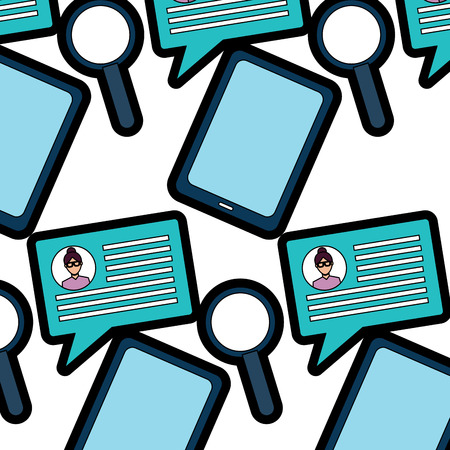Understanding Multigenerational Workforces
Today’s workplaces are more diverse than ever, bringing together people from different backgrounds and, importantly, different generations. Each generation has its own set of values, worldviews, and communication preferences shaped by unique life experiences. Understanding these differences is the first step to bridging communication gaps at work.
Who’s in the Workforce?
There are currently five main generations working side by side in many American organizations. Let’s take a closer look at each group:
| Generation | Birth Years (approx.) | Key Characteristics | Communication Preferences |
|---|---|---|---|
| Traditionalists (Silent Generation) | 1928-1945 | Loyal, disciplined, value respect for authority | Formal, prefer face-to-face or written communication |
| Baby Boomers | 1946-1964 | Competitive, team-oriented, optimistic | Face-to-face meetings, phone calls, structured emails |
| Generation X | 1965-1980 | Independent, resourceful, adaptable | Email, direct conversations, flexible styles |
| Millennials (Gen Y) | 1981-1996 | Tech-savvy, collaborative, value feedback | Texting, instant messaging, casual emails, video calls |
| Generation Z | 1997-2012 | Diverse, digital natives, socially conscious | Short digital messages, social media, quick video chats |
The Experiences That Shape Communication Styles
The way each generation communicates isn’t random—it’s influenced by the times they grew up in. For example:
- Traditionalists and Baby Boomers: Grew up before the digital revolution. They often prefer formal communication and value personal interaction.
- Gen X: Saw the rise of technology but still remember life before it. They’re comfortable with both traditional and digital forms of communication.
- Millennials and Gen Z: Raised during rapid tech advances. They’re used to fast-paced digital communication and expect quick responses.
The Importance of Finding Common Ground
Differing communication styles can lead to misunderstandings at work. However, recognizing what shapes these preferences helps teams connect better and collaborate more effectively.
2. Communication Style Differences by Generation
Understanding Generational Preferences
Each generation brings its own set of values and habits to the workplace, especially when it comes to communication. Knowing these differences can help teams avoid misunderstandings and work together more smoothly.
How Each Generation Tends to Interact
| Generation | Preferred Channels | Typical Tone & Style |
|---|---|---|
| Baby Boomers (born 1946–1964) |
Email, phone calls, face-to-face meetings | Formal, respectful, direct; value clarity and professionalism |
| Gen X (born 1965–1980) |
Email, phone calls, occasional texting | Straightforward, practical, somewhat informal; appreciate efficiency |
| Millennials (born 1981–1996) |
Text messages, instant messaging (Slack), social media, emails | Friendly, conversational, collaborative; open to feedback and quick responses |
| Gen Z (born 1997–2012) |
Instant messaging (Slack, Teams), DMs, video calls, social platforms | Casual, concise, visual (emojis/gifs); prefer real-time interaction and inclusivity |
Key Takeaways About Communication Styles
- Baby Boomers: Often value in-person discussions or detailed emails. They may see too many emojis or casual language as unprofessional.
- Gen X: Like clear and efficient messages. Theyre comfortable with both formal emails and quick calls but may not use chat apps as much as younger colleagues.
- Millennials: Prefer rapid communication tools like Slack or text. They’re open to a relaxed style but still want meaningful feedback.
- Gen Z: Thrive on fast replies through chats and DMs. They often use visuals and expect communications to be short and inclusive.
Why These Differences Matter
If you want your team to communicate well across generations, understanding these preferences is a great first step. It helps everyone feel included and heard while reducing frustration over misinterpreted messages.

3. Common Challenges in Cross-Generational Communication
When people from different generations work together, it’s natural for misunderstandings and barriers to pop up. Each generation grew up with different technology, values, and ways of interacting, which can sometimes lead to confusion or even frustration at work. Let’s take a closer look at some of the most common challenges you might see when generations communicate in the workplace.
Stereotypes and Misunderstandings
One big hurdle is stereotypes. For example, older employees might see younger coworkers as tech-obsessed or lacking loyalty, while younger employees may view their older colleagues as resistant to change or out of touch. These assumptions often get in the way of real understanding and teamwork.
| Generation | Common Stereotype | Reality |
|---|---|---|
| Baby Boomers | Resistant to change, prefer face-to-face communication | Open to new ideas but value personal interaction |
| Gen X | Lone wolves, skeptical of authority | Independent but collaborative when needed |
| Millennials | Easily distracted, need constant feedback | Value flexibility and ongoing learning |
| Gen Z | Impatient, glued to screens | Quick learners who embrace technology |
Communication Barriers
The way each generation prefers to communicate can also be a barrier. Some folks love emails; others prefer quick messages on apps like Slack or Teams. Then there are those who think nothing beats a good old phone call or face-to-face chat.
| Generation | Preferred Communication Style | Potential Barrier for Others |
|---|---|---|
| Baby Boomers | Face-to-face, phone calls, formal emails | Younger workers may find these methods slow or too formal |
| Gen X & Millennials | Email, texts, instant messaging, video calls | Older workers may miss important info if they don’t check digital channels often enough |
| Gen Z | Instant messaging, social media-style platforms, short videos (like Loom) | Other generations may see this as informal or less professional |
Lack of Shared Experiences and Language
Cultural references and slang can create gaps in understanding. A Millennial making a joke about a ‘90s sitcom might confuse a Gen Z coworker. At the same time, Gen Z’s internet slang could leave Boomers scratching their heads. This lack of common ground can make collaboration tricky.
Trouble With Feedback Styles
Younger generations often appreciate regular feedback and open dialogue. Older generations might be used to more structured performance reviews once or twice a year. If expectations aren’t clear, people can feel overlooked or micromanaged.
4. Strategies for Bridging the Communication Gap
Understanding Different Generational Preferences
Each generation has its own preferred ways of communicating. For example, Baby Boomers may prefer face-to-face meetings or phone calls, while Millennials and Gen Z often lean toward instant messaging and video chats. Recognizing these preferences is the first step toward effective communication.
Common Communication Styles by Generation
| Generation | Preferred Communication | Example Tools |
|---|---|---|
| Baby Boomers | Direct, formal, in-person or phone | Meetings, phone calls, emails |
| Generation X | Efficient, to-the-point, email or phone | Emails, phone calls, memos |
| Millennials | Collaborative, digital-first, fast feedback | Instant messaging, social media, video calls |
| Gen Z | Visual, brief, tech-savvy, mobile-friendly | Texts, apps (Slack/Teams), emojis, videos |
Practical Tips for Inclusive and Respectful Communication
- Ask About Preferences: Don’t assume everyone likes the same style. Take time to ask your team how they like to communicate.
- Mix It Up: Try using a blend of emails, quick chats, and face-to-face check-ins to include all preferences.
- Avoid Jargon: Some terms might not be familiar across generations. Use clear language and explain if needed.
- Encourage Open Feedback: Make it safe for everyone to share their ideas and concerns by actively listening and showing respect.
- Set Clear Expectations: Let your team know when a response is needed quickly versus when it’s okay to reply later.
- Be Mindful of Tone: Written messages can sound different than intended. Double-check your tone before hitting send.
- Create Opportunities for Learning: Pair up team members from different generations for projects or mentorships so they can learn from each other’s styles.
Sample Scenario: Team Project Kickoff Meeting
Samantha (Millennial manager) is leading a project with teammates from all generations. Here’s how she bridges communication gaps:
- Sends an initial email with meeting details (for Boomers and Gen X)
- Sends a calendar invite and follows up in the team’s group chat (for Millennials and Gen Z)
- Kicks off the meeting by asking everyone how they like to receive updates (showing respect for preferences)
- Makes space at the end of each meeting for questions and feedback (inclusive practice)
- Sends a summary with action items via email and posts it in the chat app (covering all bases)
The Key: Flexibility & Respect Go a Long Way!
The best way to connect across generations is to stay flexible and show respect for each person’s style. By being open-minded and adapting communication methods, teams can work together more smoothly—no matter their age or background.
5. Fostering a Culture of Collaboration and Respect
Bringing together team members from different generations can be one of the biggest strengths for any organization—if it’s handled with care and intention. Here are some initiatives and best practices to help create a workplace where generational differences are respected, valued, and used as a foundation for stronger teamwork.
Encourage Open Dialogue
Start by creating opportunities for employees to talk about their preferred communication styles. Simple activities like team discussions or “getting to know you” sessions can break down barriers and help everyone feel heard. This sets the stage for more effective collaboration.
Offer Cross-Generational Mentoring
Pairing employees from different age groups helps both sides learn from each other. For example, a Baby Boomer might share insights on industry experience, while a Gen Z colleague could introduce new digital tools. Mutual mentoring builds trust and leverages everyone’s strengths.
Provide Training on Generational Awareness
Workshops or short online courses that focus on generational differences can help employees understand where their colleagues are coming from. This leads to fewer misunderstandings and creates an environment where respect is the norm.
Create Flexible Communication Policies
Each generation often has unique preferences when it comes to communication—some prefer emails, others love quick chats or instant messaging. By allowing teams to decide how they communicate (within reason), you ensure everyone feels comfortable sharing ideas.
Communication Preferences by Generation
| Generation | Preferred Communication Style | Best Practices |
|---|---|---|
| Baby Boomers | Email, Face-to-Face Meetings | Be clear and detailed; allow time for questions |
| Gen X | Email, Phone Calls, Texts | Be concise; respect autonomy; offer flexibility |
| Millennials | Instant Messaging, Video Calls | Be open to feedback; use visuals; keep messages brief |
| Gen Z | Texting, Collaboration Platforms (e.g., Slack) | Be direct; use digital tools; encourage creativity |
Acknowledge and Celebrate Differences
Recognize team members’ unique contributions during meetings or through employee recognition programs. When people feel appreciated for what makes them different, they’re more likely to contribute their best work.
Promote Team-Building Activities That Mix Generations
Create cross-generational project teams or organize activities that encourage employees of all ages to work together. This helps break down stereotypes and builds stronger connections across the company.
Key Takeaway:
The goal isn’t to erase generational differences but to celebrate and leverage them for better teamwork. By fostering collaboration and respect, companies can unlock the full potential of a diverse workforce—and create an environment where everyone thrives.

